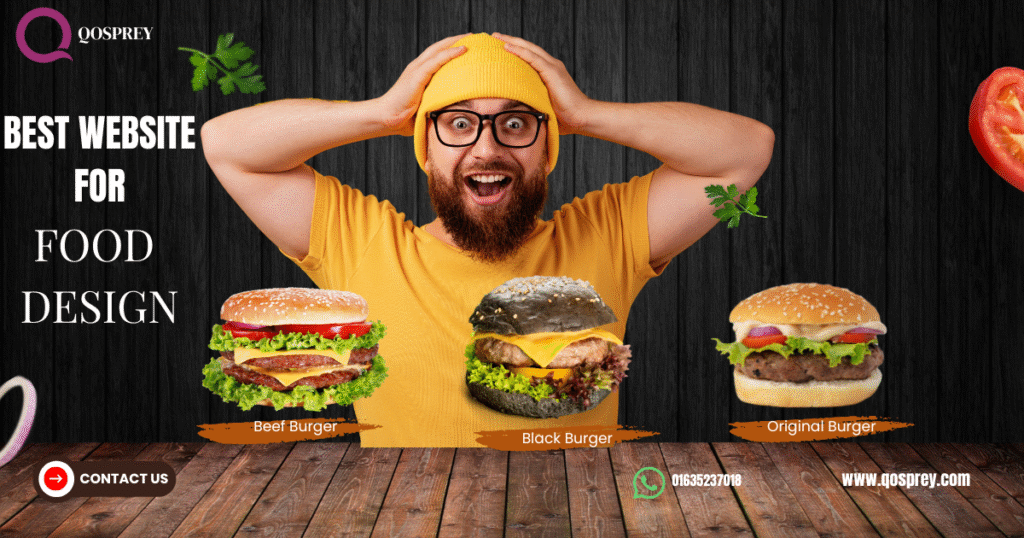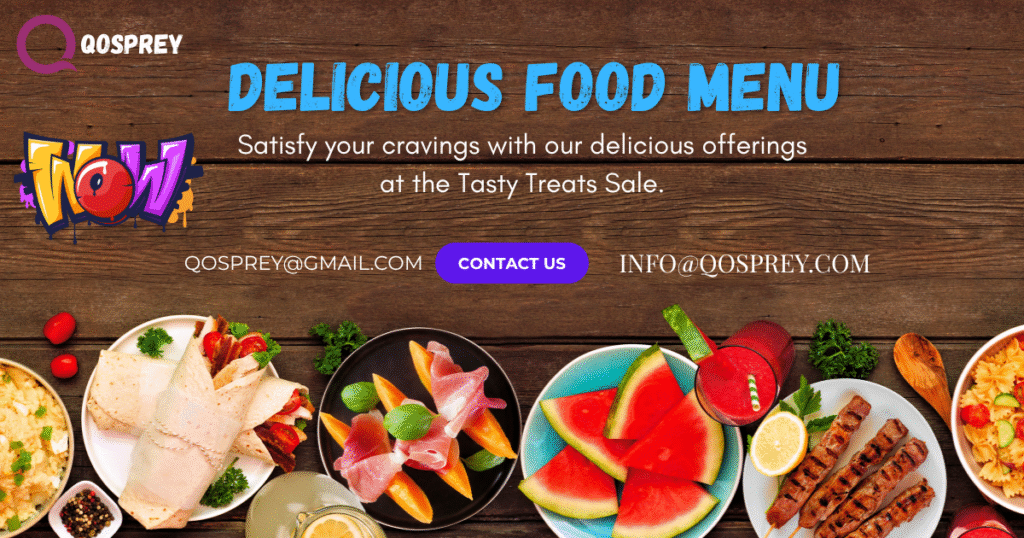Think about the last time you looked up a restaurant online. Did the website make you want to book a table—or close the tab? For food businesses, design isn’t just about looks. It’s about appetite, trust, and whether people stick around long enough to order or visit.
In today’s digital world, a food website is often the first taste someone gets of your brand. If it’s bland, they’ll move on. If it’s done well, it can turn casual visitors into loyal customers. Let’s break down what makes food website designs work, what’s trending right now, and why working with a partner like Qosprey might be the smartest move you make.
Why Food Website Design Matters More Than You Think
A website is like a front door. If it’s messy, hard to open, or uninviting, people won’t bother walking in.
- Visuals matter. A sharp image of a steaming pizza can tempt someone in ways words never could.
- Ease matters. Menus that are simple to browse (especially on a phone) keep people engaged.
- Speed matters. Every second a page takes to load increases the chance someone clicks away.
Food is about experience—and design is what creates that experience online.

What Every Food Website Needs
Here are the basics that make a food website not just pretty, but practical:
- Great photography – Don’t skimp here. Grainy shots kill appetite. Invest in good lighting and angles.
- Menus that work – People want to know what you serve and how much it costs without digging around.
- Brand personality – Rustic bakery? Go warm and earthy. Sushi bar? Clean, minimal, and fresh.
- Convenience tools – Online ordering, reservations, even delivery tracking—all make life easier.
- Useful content – A blog with recipes, food tips, or even chef stories can help you show up on Google.
Food Website Design Trends for 2025
Design styles shift, and food websites are no different. Right now, we’re seeing:
- Big, bold photos with minimal text. Let the food do the talking.
- Dark, moody themes. Especially for upscale restaurants.
- Videos and movement. A 10-second clip of a dish being plated says more than paragraphs of copy.
- Personal touches. AI-driven recommendations or customized menu views are popping up more often.
- Mobile-first thinking. More than half of food-related searches happen on a phone.
Examples That Nail It
- Restaurant sites with giant hero images and “Reserve Now” buttons right up front.
- Food bloggers who keep their layouts clean and let recipes be the star.
- Delivery platforms that make ordering as simple as three taps.
Notice the pattern? Clarity and speed. They don’t waste your time—they guide you to action.
How Qosprey Fits Into the Picture
Building a food website that looks good and performs even better isn’t easy. That’s where Qosprey comes in.
Founded in 2023, Qosprey is a digital solutions company with roots in Bangladesh and clients worldwide. Their 15-person team handles everything from sleek restaurant websites to full-featured delivery platforms. But design is only part of it—they also manage SEO, social media, paid ads, and branding, so you’re not just online, you’re actually visible.
What sets them apart? Fast delivery, fair pricing, and the motto: “Make business our headache, not yours.” That means you focus on food while they handle the digital side. And with a SaaS platform in the works, Qosprey is preparing to offer tools that make running a food business even smoother.

Choosing the Right Designer
Not every designer is a good fit. Here’s what to check before hiring:
- Have they worked on food websites before?
- Can they handle both design and SEO?
- Do they understand mobile-first design?
- Will the site scale as your business grows?
Mistakes That Ruin Food Websites
A few common missteps you’ll want to dodge:
- Cramming too much onto one page.
- Slow-loading photos that make people leave.
- Forgetting that most people browse on phones.
- Weak “Order Now” buttons hidden where no one looks.
Small errors, big consequences.
Wrapping It Up
Food website design isn’t about fancy layouts or trendy fonts—it’s about creating a space where people can see, trust, and taste your brand online. From crisp visuals to smooth ordering, every piece counts.
If you want a food website that actually delivers results—not just clicks—Qosprey can help you make it happen. They bring design, marketing, and strategy together so you can focus on what you do best: serving great food.
Ready to take your food brand online in style? Reach out to Qosprey and let’s get cooking.
FAQs
High-quality images create appetite appeal, build trust, and encourage customer action.
Online menus, reservation systems, reviews, contact details, and secure ordering.
Yes, responsive designs are essential for a seamless browsing experience on all devices.
It helps improve visibility, attract more customers, and rank higher in search results.